Disclosure: Privacy Australia is community-supported. We may earn a commission when you buy a VPN through one of our links. Learn more.
Best Penny Stocks in Australia

Got enough cash for a burger and fries? Have a penny stock on the side, too.
These are stocks that are valued at under a fiver per share – that said, a few are listed on large exchanges like the NASDAQ.
Most penny stocks are bought over-the-counter (OTC)…But OTC is poorly-regulated compared to the ASX. In the past, traders used the Bulletin Boards (OTCBB).
Due to auditing issues, this recently gave way to buying solely through Markets Groups, which quote for over 10,000 thinly-traded firms. We’ll avoid OTC altogether.
Below, I’ve covered penny stock basics. But as always, let’s jump right into the actual products. Without further ado: in this guide, we’re going to cover the best ASX penny stocks.
FAQs:
- Why Do People Trade Penny Stocks?
- What Are Blue-Chip Companies?
- Why Are Penny Stocks Risky, By Comparison?
Each of these is listed on the Australian Securities Exchange (The ASX), as opposed to pink sheets (OTC), which are much less regulated. The ASX has a market cap of $1.6 billion trillion (May 2014). The exchange has been alive since 1987 and is under stringent financial market regulations.
Table of Contents:
Best Penny Stocks Australia – Our Reviews
To invest in pink sheet stocks, you’ll need a broker first. But if you already own a brokerage account, most likely your broker will allow you to trade penny stocks, but some services limit exposure to the pink sheet market to experienced traders.
1. Taseko Mines Ltd (TDP)
Key Facts:
- Copper venture firm focusing on discovery and development
- Expected to benefit from the production of electric cars
- Slump in the fourth quarter
- Operates the second-largest open-pit copper mine in the world

*According to reports (includes TradingView data):
Taseko Mines Ltd., a copper venture firm, handling its discovery and development.
Despite the stock failing to rally, this isn’t a surprise to investors. In one early profile of the company, it was reported that companies like this offer a unique long-term opportunity by benefiting from China’s economic growth and the electric vehicle revolution. While these opportunities won’t happen overnight, stocks like Taseko may grow in value. But investors need to have both patience and a good risk appetite.
There was also a slump in the fourth quarter from harsh weather conditions in November, but this could be a market overreaction.
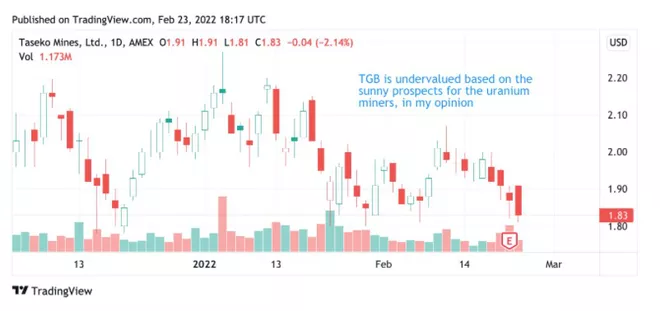
2. Denison Mines Corp. (DNN)
Key Facts:
- Good position to grow since it’s a uranium mining firm
- 250% growth in revenue last year
- Great progress in the exploration of uranium
- Has several uranium mining mills around the world

*According to reports (includes TradingView and FinViz.com data):
Holding a bullish outlook on Denison and uranium as a whole has good logic. There is a flurry of international goals moving away from the oil and gas industry in order to embrace electric, and other sources of power, with nuclear energy also in a good position to grow.
This however doesn’t take away from Denison’s 250% growth in revenue across the year with a striking 560% rise in earnings per share (EPS) alongside this period. And the balance sheet seems healthy, with promising uranium exploration progression.
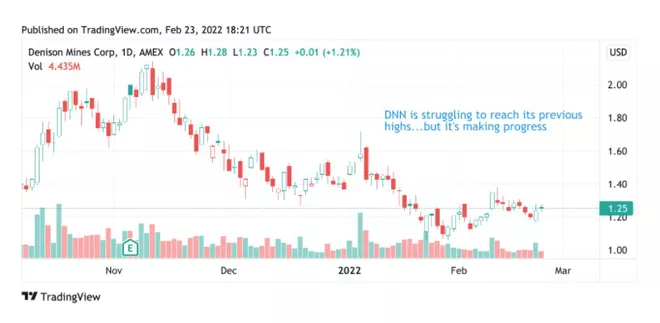
3. ARC Document Solutions (ARC)
Key Facts:
- Focuses on many different areas of document services including printing, scanning, and photocopying
- Dividends added to the shareholders at $0.05
- Struggled initially during the pandemic and the move for people to work remotely but seems to be picking up again in revenue
- Investors will need to have patience for stock increases

*According to reports (includes TradingView data) – This is a New penny stock to watch:
ARC offers a unique solution in amalgamating a whole host of document services – into a single package. They’re a hub for doing the scanning, document photocopying, and printing services; but also include backing up and storing data; as well as the installation of office imaging hardware and having technical assistance that can ongoing help with managing these products.
ARC Documents Solutions has worked hard to achieve substantial growth. They face enormous growth barriers from the increase of remote working and the decrease in physical brick-and-mortar offices. Leadership has switched its focus to virtual documents instead of paper documents. This has been a tedious journey for ARC, and they have remained largely invisible to Wall Street.
Recent trends indicate the efforts may be leading to a summer’s harvest, with the second and third quarters reporting an EBITDA of over $11 million. The gross margin, responsible for measuring Cells from expenses for selling goods, is at a strong 32%.
Overall, a collection of healthy financial ratios indicate high quality and health, for instance, the price of sale (P/S) ratios at 0.54, and the price to free cash flow (P/FCF) is 3.90. Dividends have been added to its shareholder perks at $0.05, which is far greater than dividends in its industry sector.
The final word: ARC has struggled to be seen as more than a dinosaur from a dwindling reprographics industry. But renewed earnings suggest its services and transformations are attracting positive exposure.

4. MIND C.T.I. (MNDO)
Key Facts:
- 20 years of service for main-name clients including Walt Disney and Vodafone
- Compared to other penny stocks, Mind is more likely to succeed and stick around for the long run
- $30 million in securities and only $9 million in debts
- Recent financial metrics make it a good buy for investors

*According to reports (includes TradingView data) – This is an Established penny stock to watch:
MIND is an Israeli software company that describes itself as a leader in the live billings, communication metrics&analytics, and customer care sector. MIND, indeed, has a lot of claim to fame, with a 20-year track record of providing services for blue-chip clients among which are:
☑️ Walt Disney (DIS)
☑️ McDonald’s (MCD)
☑️ Coca-Cola (KO)
☑️ Vodafone (VOD)
So it may be surprising to find them in the penny stocks category… In some sense, MIND is a reminder of how high-quality firms can remain overlooked by the larger market, leading to unimpressive market values, sub $5, for a decade’s plus. Compared to 99% of penny stocks, MIND looks sound, sophisticated, set for the long haul.
Its balance sheet is healthy, with $30 million in securities that dwarf its debts that sit at only $9 million. The financial ratios of MIND furthermore confound its low market value. For instance, the P/E ratio is 10.77, indicating superb bang-for-the-buck; a strong dividend of 8.41%; with a great margin of more than 50%; and a profit margin of over 20%; with reliably good cash flow.
As for its long-term contractual clients, its pool is wide enough to sustain long revenue and resist economic or business slumps relative to its peers. One or two losses of key clients won’t destroy it. So what’s the cause of its low value? Possibly, because it is a hard-to-market service; it offers stable non-flashy services compared to bigger software players.
The company is also very low-key, not even releasing press releases other than to report earnings. In the words of one analyst, this company has “flown under most people’s radar” because it simply isn’t interested in the following fashion, going as far as not to even do conference calls for the last decade. Perhaps a management change issue?
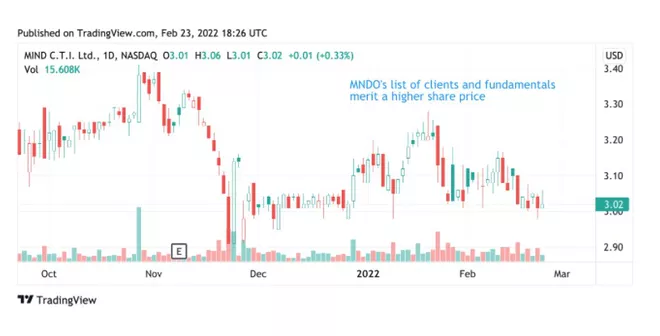
5. Castle Minerals Limited (CDT)
Key Facts:
- Projects all over the globe including Australia and Africa
- Focus on gold projects
- Have recently expanded to other mineral projects including graphite, lithium, and zinc
- More projects where they will hold 100% interest are in the words
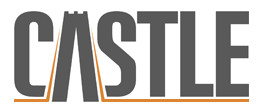
Castle Minerals is a mining company with many different development projects mostly in Western Australia. They also have a few mining projects in Ghana.
Their main focus both in Australia and Africa is gold. In Western Australia, you can find their projects at Success Dome, Polelle, Wanganui, and Beasley Creek. In Ghana, you will find their main project at Carlie Mining.
Along with their gold projects throughout Western Australia, they have zinc, lithium, and graphite projects.
The current share price is $0.03 and it usually stays right around this price with some slight fluctuations.
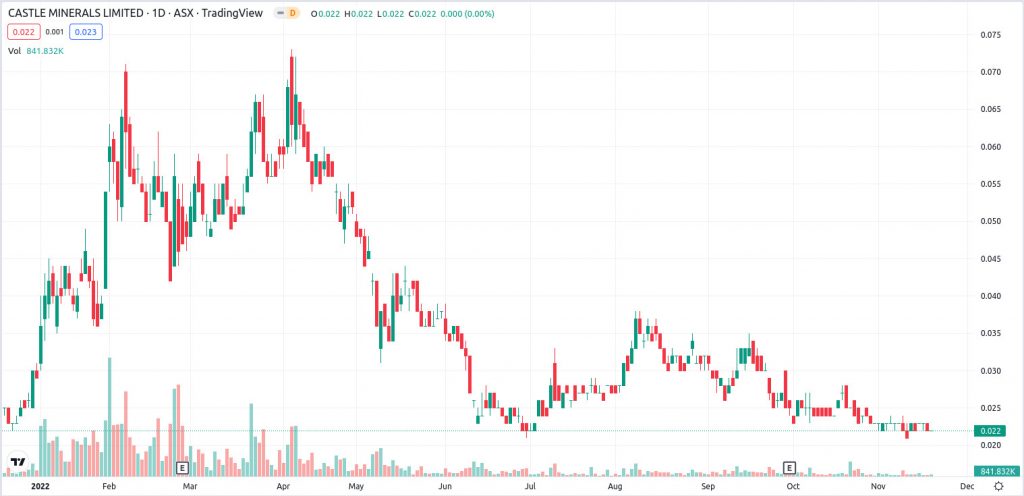
6. Hancock & Gore Ltd (HNG)
Key Facts:
- One of the oldest penny stocks around and established in 1904
- Long-term growth is expected
- Specialize in small and medium-sized businesses
- Stock price has been stable over the last few years

This is an investment company that mainly focuses on small and medium-sized businesses. You will find them narrowly interested in long-term investment returns. In the most recent months, they claim they will have significant investment outperformance within about a five to a ten-year timeframe.
While most penny stocks are relatively new, Hancock & Gore is not. They have been around since 1904 and were first established in Brisbane.
They say this long history gives them an advantage because they are able to better identify companies that have a strong potential to grow in the future. Share prices are usually around $0.32.
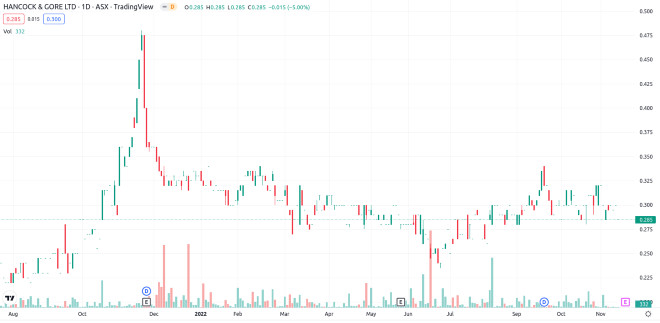
7. Argosy Minerals Limited (AGY)
Key Facts:
- Develops lithium overseas
- Expected to have fast growth with the increase in electric car production
- 77.5% interest in a lithium project in Argentina
- Share prices currently soaring with the electric car industry growing each day

Argosy mainly specialises in the development of lithium overseas. They have several projects. Lithium is also a strong area because it has increasing potential as it’s used in the making of electric cars all over the world.
The main project is Rincon Lithium in Argentina where they have a 77.5% interest. They are expected to hold about a 90% interest in the near future.
Although Rincon is their main project, they are also the full owner of a lithium project in Nevada, USA called Tonopah Lithium Project. Share prices usually hover around $0.56.
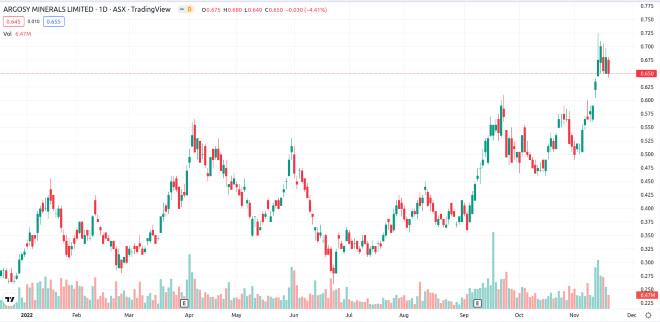
Buying Guide
The securities on this in this guide are listed on the Australian Securities Exchange (ASX). As opposed to pink sheets penny stocks – see below – which would be considered “off-exchange” stocks, with less overall regulation and accountability.
What Are Penny Stocks? 📉
Penny stocks are shares in smaller companies, i.e. specifically stocks that are trading at under $5 per share. Historically, it used to mean stocks that were under a dollar in price – thus the name “penny stocks”, as most were priced at a cent or a few cents – but this has changed with time.
Typically, penny stocks will be holdings in young or small companies or companies who are going through financial difficulties (such as bankruptcy). Most of the time, investing in penny stocks is considered a high-risk investment.
These companies are normally smaller, have fewer transactions, therefore less liquidity or buyers in the marketplace. So it can be hard for stockholders to sell their positions. Low liquidity also means it’s hard to find a fair market price. Spreads can therefore be pretty wide or more speculative.
Due to the higher risk, it’s hard to find any penny stocks on security exchanges such as the New York Stock Exchange (NYSE) or the NASDAQ, as these exchanges have stringent criteria for firms who seek to be included in the listings, and such entities infrequently meet these requirements. However, those In this guide are all listed in Australia’s securities exchange (ASX).
“The Pink Market”: Riskier Way to Buy Penny Stocks
Let’s say you were to veer “off-exchange”.
A few changes have happened with the way their penny stocks are handled. Up until November 2021, most trading transactions in penny stocks happened through something called the OTC Bulletin Board. Or privately through OTC Markets Group’s Pink Sheets (also known as The Open Market).
In either case, the name The Pink Market or “pink sheets” came from the colour of paper that share prices were purchased on, once published. which was somewhat popularised by the movie Wolf of Wall Street). But in November, FINRA announced the closure of OTC Bulletin Boards, which means OTC Markets Group is the keystone player in the penny stocks market.
If you’ve ever seen the movie, you may have noticed trades happening through coloured slips or sheets of paper. These pink sheets gave investors information on the liquidity and price of penny stocks. These pink sheets are also used to rank companies by their risk threat. The “Pink Market” is the coined name of over-the-counter trading of stocks rather than through major exchanges such as the NYSE.
Pink sheets aren’t registered under the Securities and Exchange Commission (SEC). For this reason, it doesn’t meet their listing criteria. So you should consider pink sheets trading higher than trading normal stocks on the major exchanges. (Most but not all penny stocks are pink sheets-listed).
In fact, companies listed using pink sheets have few requirements. To get listed, all that is needed is to submit an electronic form 211, which is offered by the financial industry regulatory authority (FINRA). The most complicated aspect of managing this process is filing accounting annually with the SEC.
OTCBB Vs. Pink Sheets

The OTCBB was operational up to November 2021. It was an electronic quotation service offered by FINRA to its subscribed members – for over-the-counter (OTC) trading information on U.S. stocks.
The service was quotation-only, however, FINRA let go of the service after the SEC announced thousands of its thinly-traded companies would have to achieve higher regulation, mostly accounting.
By this point, OTC Markets Group had the lion’s share of data and trading. “Pink Sheets” is the alias and former name of OTC Markets Group; which quotes for almost 10,000 OTC securities. The advantage of pink sheets is they’re cheaper per share than stocks in the major exchanges – sometimes even under $1.
The risk of pink sheets is higher volatility. But there are advantages. Some investors sniff out pink sheets for companies who have slumped in value. Some of these firms were once listed on major exchanges such as the NASDAQ but word the listed due to no longer meeting certain criteria…
1. Companies bouncing back. An investor could purchase shares of the firm in the hopes that it could make a comeback. Normally, a company is listed because of a large financial upset, such as a negative event that makes the company’s prospects look bleak.
2. Young upstarts. On the other hand, young companies who are yet to have a come-up can be found here. Investing early in the company can be profitable if it suddenly or continues to grow; with the possibility that it ends up on a major exchange.
Pink Sheets Risk-Tier System 🗂️

Pink sheets firms also need to be classified or tiered according to risk, to make it more obvious who the most volatile companies in the pink sheets market are. The biggest disadvantage of pink sheets is reduced information. So less data is needed as a requirement for pink sheet listing.
This can make it hard to know exactly what you’re purchasing and the company’s health across time. There’s also less liquidity for thinly-traded companies, which means having to wait longer to be able to find a buyer so that you can end your position. And fewer analysts for pink sheets, which means much more due diligence is burdened on the investor to locate key information.
There are five risk-tiers for pink sheets:
- ☑️ Trusted Tier – U.S. and international firms who the pink OTC market sees as trustworthy and investor-appropriate. International Premier QX companies in this tier are based overseas and listed on an international exchange. Whereas Premier QX firms are U.S. listed and meet standards for NASDAQ capital market listing.
- ☑️ Transparent Tier – Lower than Trusted. But they are providing clear data with either the OTC Disclosure News Service or the SEC. Information should be no older than six months, with quarterly or annual reports.
- ☑️ Distressed Tier – These companies are providing limited information. This can be for technical reasons, such as failing to provide the other is under six months old but in other cases, these companies have gone bankrupt.
- ☑️ Dark/Defunct Tier – Companies who provide no information. Or they do not have a market maker.
- ☑️ Toxic Tier – Companies with extreme risks who are generally considered fake businesses or scams. This is designated with a skull-and-crossbones symbol. There will also be a caveat that says “buyer beware” – because these stocks are associated with suspicious promotions, spam, corporate issues such as reverse mergers, regulatory bans, or other red flags.
What Did ‘Wolf of Wall Street’ Have to Do With Penny Stocks?

Jordan Belfort’s memoir turned into a movie starring Leonardo Di’Caprio – ‘Wolf of Wall Street’ – documented how penny stocks were used to make fraudulent over-the-counter brokerage house, Stratton Oakmont Inc., rich as a pig in mud during the late 1980s and 1990s. To learn more about how it happened, head to this section.
Wall Street is a 2007 memoir by a former trader and stockbroker Jordan Belfort. By 2013, a film of the same name directed by Martin Scorsese was adapted from the memoir, starring Leonardo DiCaprio who played Belfort.
In the memoir, Belfort documents his real-life story of forming an unethical brokerage house Stratton Oakmont, which used “pump and dump” schemes via penny stocks in order to pawn off low-value stocks for far more than their value.
Stratton incorporated reached its nexus of success during the late 1980s to the mid-1990s, where it became a large Wall Street company. But by 1996, the firm was shut down by regulators, and Belfort was jailed on charges of security fraud.
History of Stratton Oakmont (and Penny Stocks)
Of Long Island, New York, Stratton Oakmont was an “over-the-counter” brokerage house that emerged after small broker-dealer Stratton Securities was bought out by Jordan Belfort in 1989 with colleague Danny Porush – something of a natural progression from managing a small franchise of the firm and gaining illicit successes.
Jordan used the bigger dealer house to carry out larger-scale fraud, using its deeper supply of investor prospects. The stocks of microcap companies (penny stocks) were artificially inflated through a systemised campaign of lying about their potential and current worth. Speculators would be misled into thinking the stock should be bought at a higher price than the exchange would suggest.
Stratton Oakmont would also fail to process selling requests; processing orders (buying, selling) is the responsibility of any over-the-counter broker-dealer. This approach, once again, artificially maintained a manipulated target value. Once shares were pumped to saturation, operators of the scheme would then dump their own personal holdings and investors woke up to find out they had lost all, or a substantial percentage, of their investment.
As a result of the fraud, numerous shareholders and many executives were arrested. The firm closed in 1996.
What are “Pump and Dump” Schemes?
Abbreviated to P&D, “pump and dump” is a type of securities fraud where owned stock is inflated by misleading campaigns of positive statements. Speculators are lured into purchasing stock at a higher price; operators, having purchased stocks at a cheaper price, are able to reap the difference once they suddenly sell their shares – at the point that a critical value is reached.
While the stock market has become much more regulated over the years, in order to offset the risk, cryptocurrency is still relatively very sensitive to P&D. Cryptocurrency is more of an unregulated market, and in some cases, large amounts of the currency are held in a small number of hands. Some organised cryptocurrency schemes use social media platforms like Discord and Telegram for P&D.
SEC: Security and Exchange Commission
The Security and Exchange Commission (SEC) is an independent government agency federally responsible for guarding investors by monitoring the securities market for fairness and order.
FAQs
Why Do People Trade Penny Stocks?
Some retail investors get a kick out of the roller-coaster experience of trading in pink sheets. That’s because these companies are in poor financial shape relative to blue-chip companies. Penny stocks are mostly on the off-exchange market.
And the SEC warns that this market is filled with manipulation and fraud. But investors are also looking for cases where companies have been undervalued, overlooked, or are just getting started – diamonds in the rough. And in some cases, companies can be resurrected from the dead.
Overall, investors are looking for cases pretty similar to cryptocurrency during its influx, where some sole product climbs from cents to over $10 per share. Historic examples:
- ☑️ BlackBerry
- ☑️ Sirius XM
- ☑️ Ford Motor Co
- ☑️ Fannie Mae
- ☑️ Xerox
- ☑️ RadioShack
- ☑️ Pier 1 Imports
What Are Blue-Chip Companies?
These are nationally trusted, and financially sound firms. Typically, blue chips sell widely-used, high-quality services and products. And they have a good track record for being robust during slumps and even weathering economic recessions, which adds to their reputation for stability and dependability.
Take Admiral Market’s top-ten list of blue-chip companies. Johnson & Johnson took the number 1 spot – and the list included Walt Disney, JPMorgan Chase & Co, AT&T, Cisco Systems, and American Express.
Why Are Penny Stocks Risky, By Comparison?
Penny stocks give small businesses exposure to public funds. These companies may use this system as a way of going through financing stages, in order to work their way into the larger marketplace.
As they’re still developing a reputation, their securities are normally riskier than better-known blue-chip stocks. But they may also set lower entry prices, which give lots of room for upside – one dramatic example could be buying stocks in Microsoft before it was well-known.
You Might Also Like:




